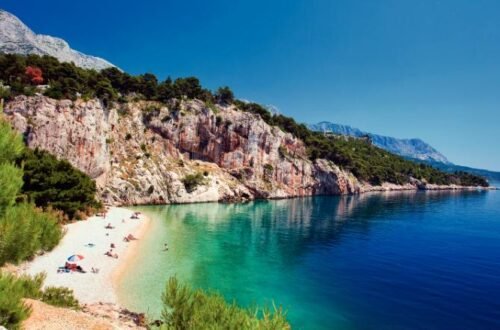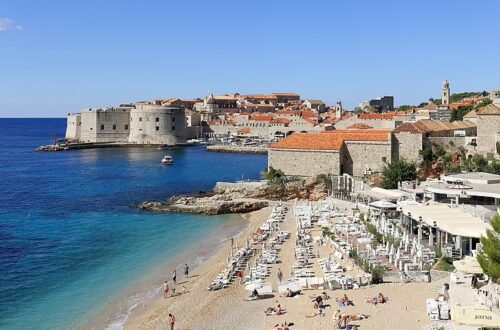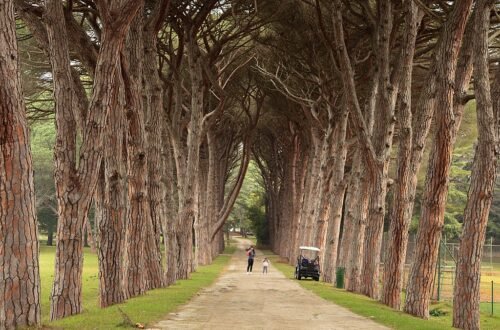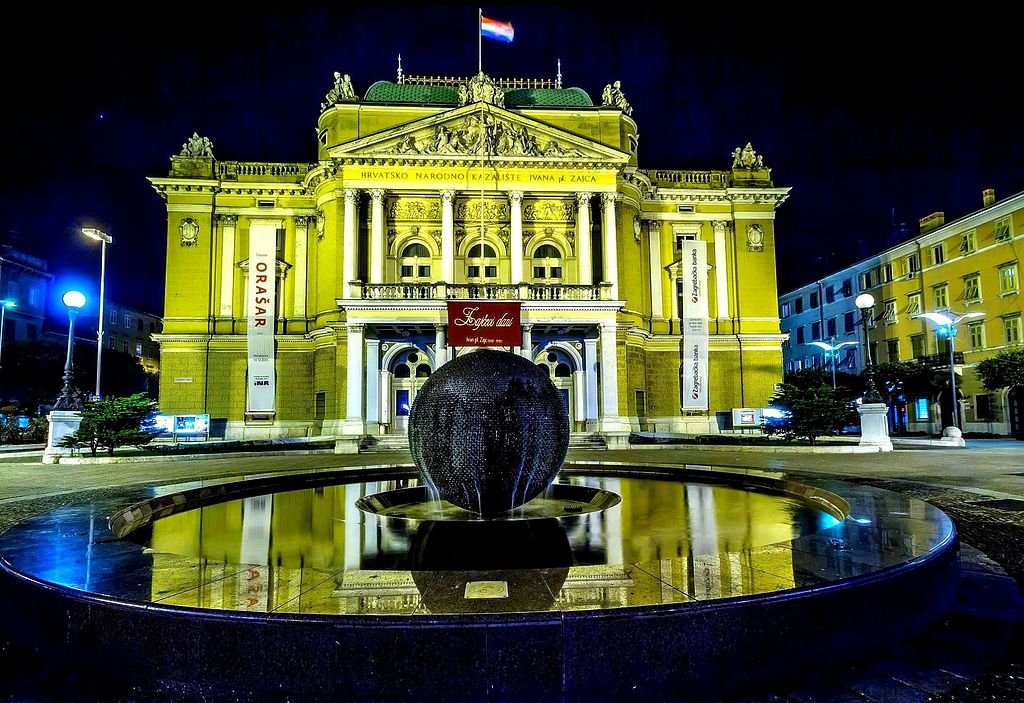
15 Best Things to See in Rijeka (Croatia)
The third-largest city in Croatia, Rijeka, is a more understated destination than Split and Dubrovnik, but this just adds to its “realness.” In Rijeka, you can experience daily life in Croatia. You may socialise with locals over dinner, drink, or night out on Korzo, Rijeka’s bustling promenade, or shop like a true Rijekan at the bustling central market. Rijeka, which is located near the Adriatic, is more akin to a city in Central Europe, such as Budapest or Prague, thanks to its eye-catching neoclassical palaces and theatre. Of course, Blue Flag beaches with their turquoise waters are close by if you need to unwind. Let’s look at the finest activities in Rijeka:
- Opatija
- Roman Arch
- Kastav
- The Croatian National Theatre Ivan pl. Zajc
- Peek & Poke Computer Museum
- Beaches
- City Tower
- Central Market
- Local gastronomy
- Astronomical Centre Rijeka
- Trsat Castle
- Torpedo Factory
- Korzo
- Modello Palace
- The Maritime and History Museum of the Croatian Littoral
Opatija
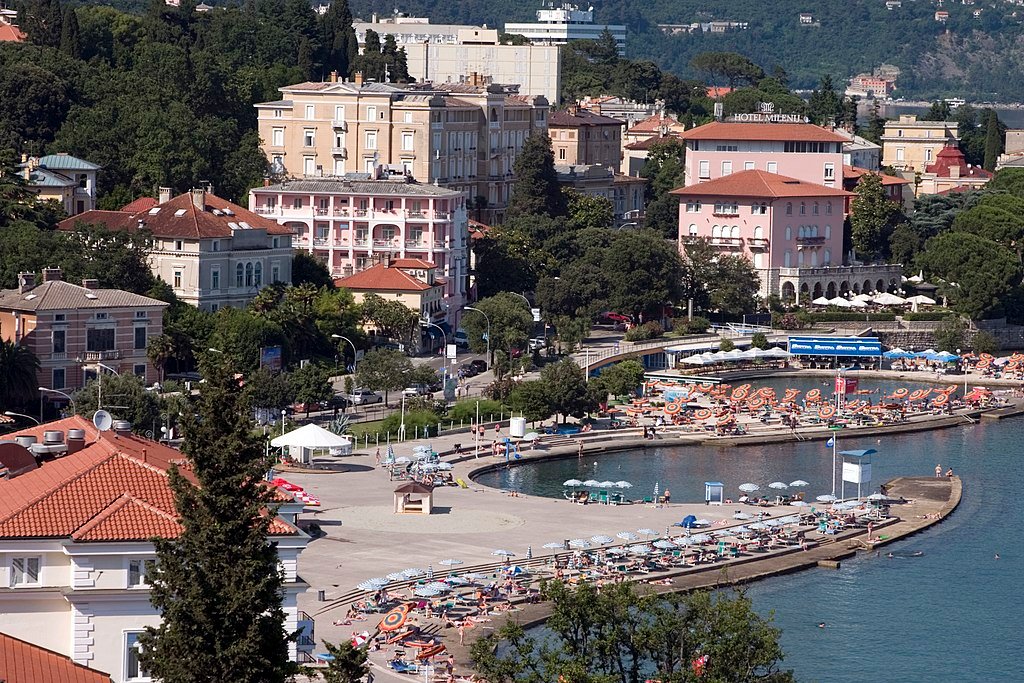
Follow in the footsteps of the Austro-Hungarian Emperor and nobles who founded Opatija as a spa and used to spend their winters here in this resort 20 minutes west along the coast from Rijeka. You can see why the town was known as the “Nice of the Adriatic” in the 19th century by taking a look at it, and the Austrians undoubtedly left their mark. Stately buildings from the time of Franz Joseph I are everywhere in Opatija. Try the opulent Villa Angiolina, which features traditional French gardens, or take a stroll along the Lungomare, a promenade that was constructed along the coast in the 1880s.
Roman Arch
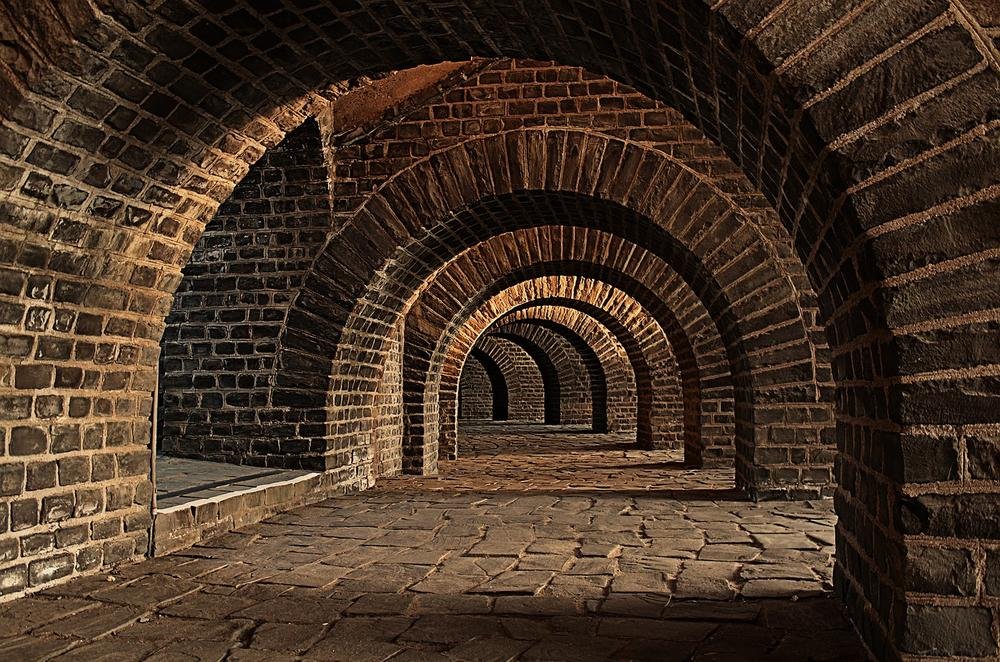
Long thought to be a Roman triumphal arch, the archway in the centre of Rijeka was a portion of the entrance to Tarsatica’s ancient property. This was the late-Roman military stronghold that would subsequently serve as the foundation for Rijeka. In any case, Ulica Stara vrata, the structures between Korzo and the cathedral, have been integrated on each side, making it the oldest piece of heritage on the streets of contemporary Rijeka.
Kastav
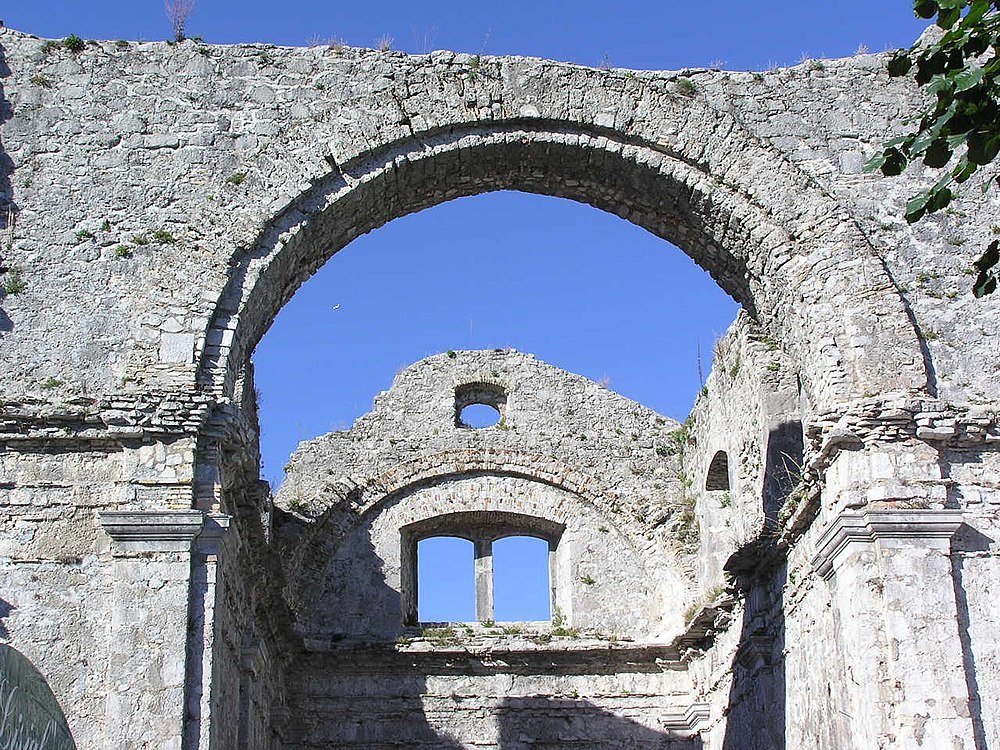
This tiny stone village on a high elevation, which is 365 metres above the sea, is located ten kilometres up the coast from Rijeka. If you want to get away from Rijeka, the streets of the 16th-century core are ideal. Many Rijekans visit Kastav in the summer for the numerous concerts and festivals hosted there. Along with the season-long Kastav Summer of Culture festival, there are blues and guitar festivals. If you plan to drop by, check the local listings to see what’s happening. You may simply savor the views, which extend out to the islands of Krk and Cres and down to Rijeka, in the interim.
The Croatian National Theatre Ivan pl. Zajc

You won’t be surprised to find that this opulent neoclassical structure was designed by a Viennese firm in the 1880s because it wouldn’t look out of place in one of the great Central European towns. Ivan Zajc, a Croatian composer who has been referred to as the country’s Verdi and one of its most influential cultural icons in the late 19th century, gave the theatre its slightly awkward official name. The National Theatre is a multipurpose space where ballet, opera, concerts, and plays are performed. If you’re travelling to Rijeka, you can browse the website to see if anything catches your eye.
Peek & Poke Computer Museum
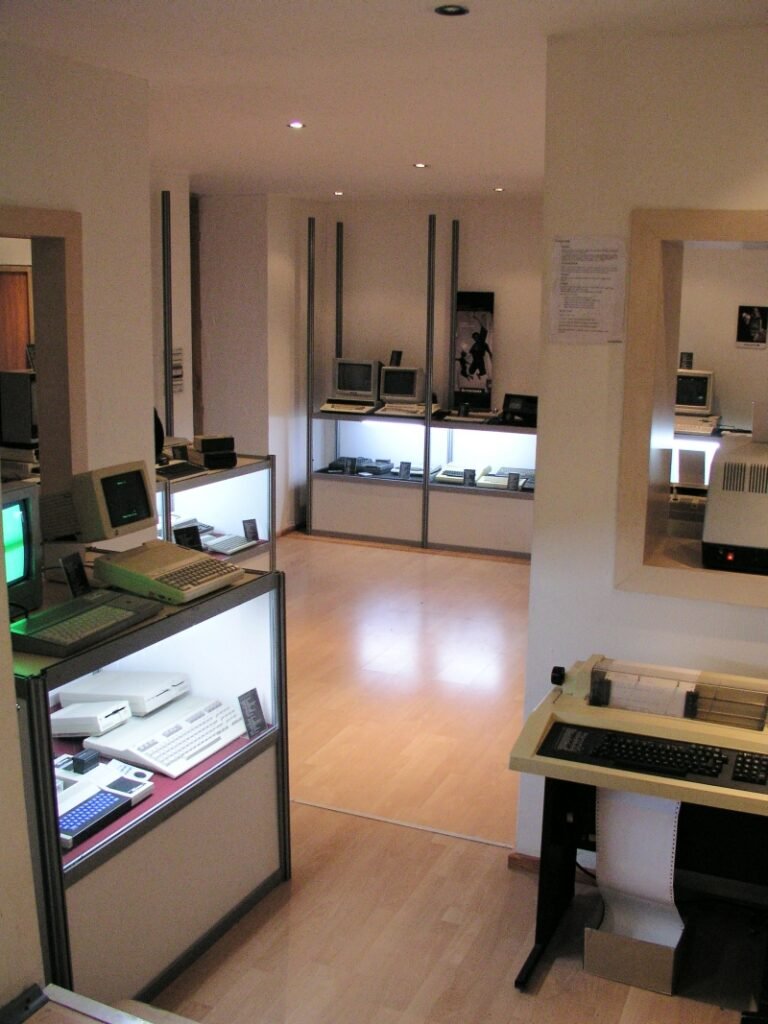
If you like old computer hardware (or even if you’re not! ), you’ll love this truly hands-on attraction. Peek & Poke is a sizable collection of PCs and game consoles that date back to the 1960s. So it stands to reason that different age groups will each have their favourites, from the Sinclair Spectrum to the Nintendo Wii. It’s fascinating to observe how home computing has developed up close and to see so many of these vintage machines still functional. It might be difficult to peel yourself away from some of them since guests are welcome to try them out for free as well!
Beaches
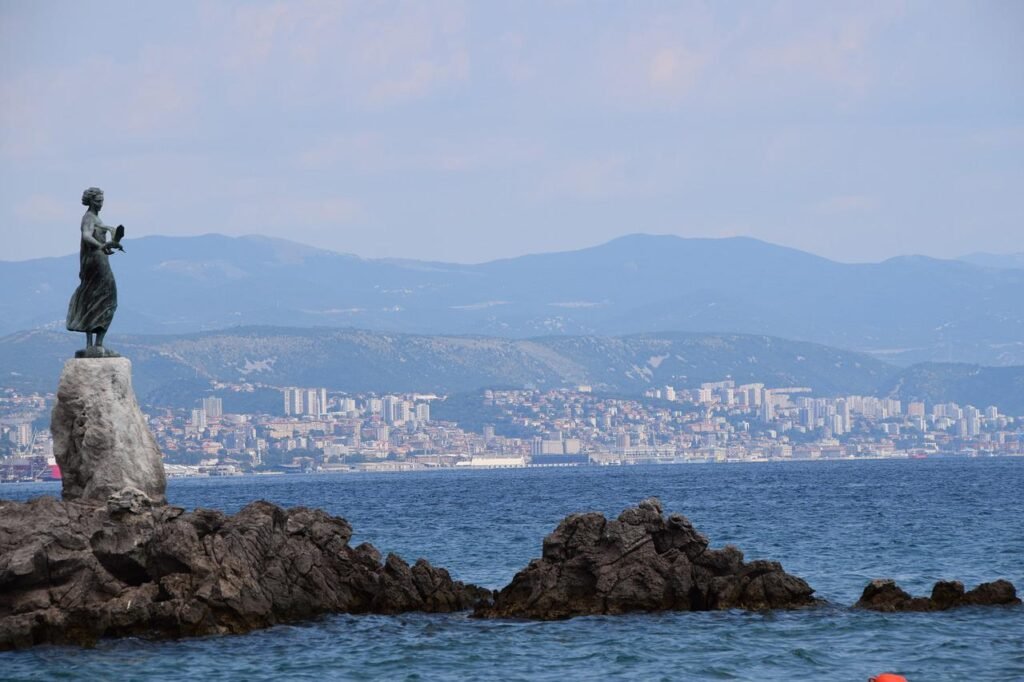
There are 11 beaches along this stretch of coast, and two of them display the Blue Flag, which is given to Europe’s top beaches based on factors including amenities and beach hygiene. These are Ploce and Kostanj, two shingle bays with the calm, clear waters that tourists are accustomed to and like on Croatia’s beaches. Croatia is a nation that loves sports, so you can find volleyball courts on every beach as well as equipment for water basketball, which is a lot of fun in the shallow sea.
City Tower
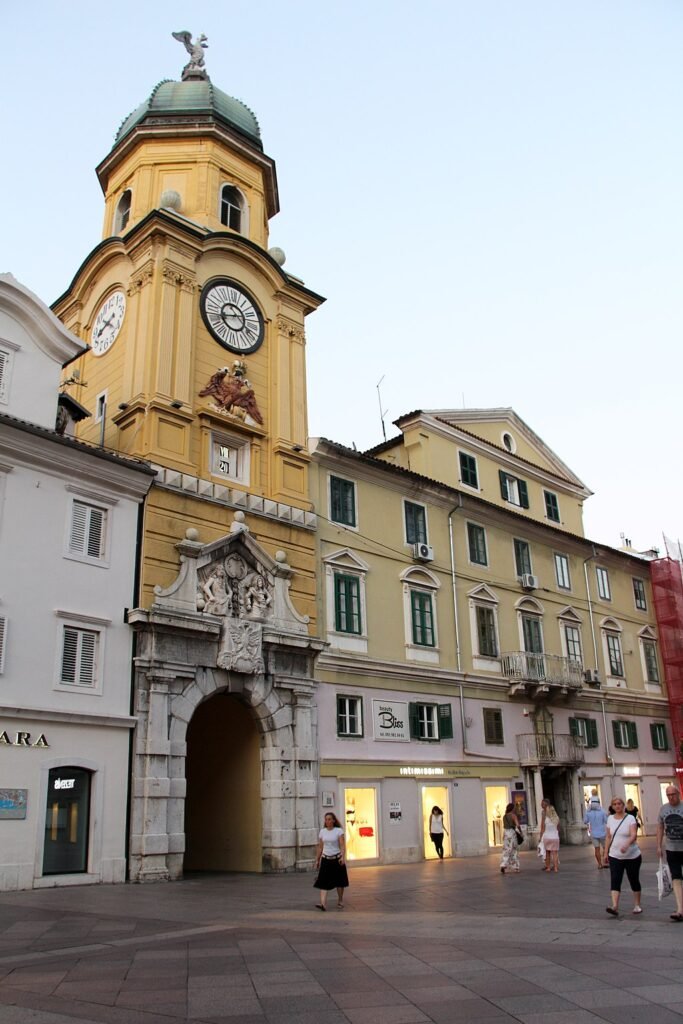
You’ll reach the baroque City Tower, which is possibly the most recognisable structure in the city, halfway down Korzo. A stone carving of Rijeka’s double-headed eagle coat of arms, which the Habsburg Emperor Leopold I gave the city, adorns the front of the tower. You may see that the eagle is clutching an overflowing urn in its talons if you have good vision. This is meant to represent the city’s unwavering devotion to the Austrian ruler. The clock face above the coat of arms hasn’t altered since the 1600s.
Central Market

One of the easiest ways to learn about a city’s traditions quickly if you are new to it is to visit its markets. The Fish Hall in Rijeka is a stunning example of art nouveau metal and glass construction. It was constructed in 1916 on the site of a former neoclassical structure, whose grand entrance is still in existence. Several kiosks offering fruit, vegetables, and street food are located outside this hall, and two smaller pavilions adjacent to it are where you can get meat and dairy. You must go if you are staying in a self-catering apartment, both for the experience and to stock up on fresh vegetables!
Local gastronomy
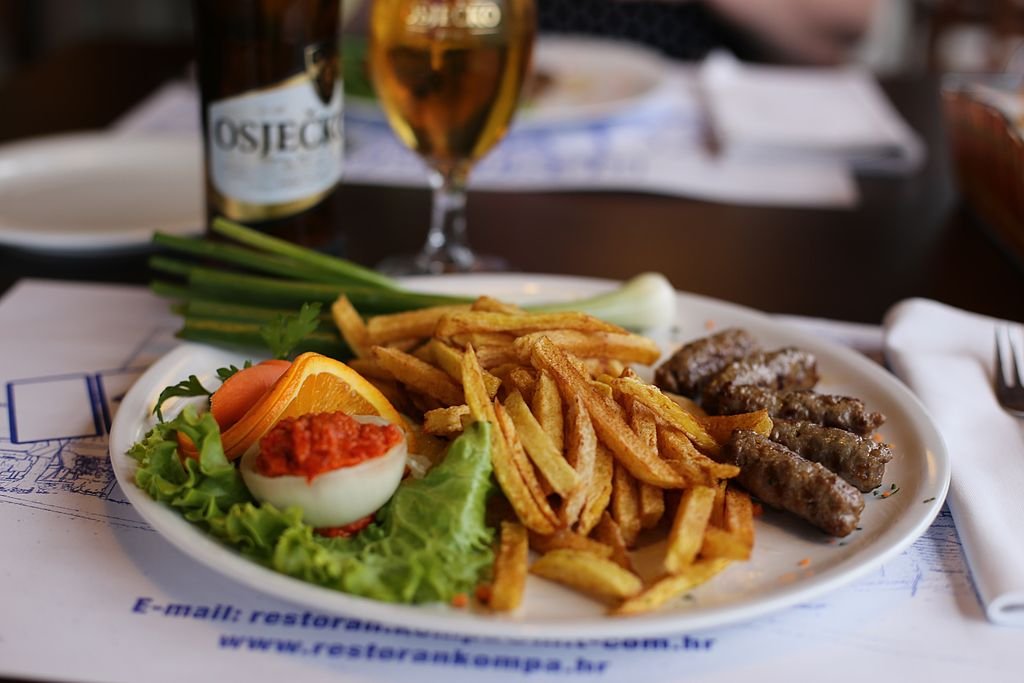
Rijeka is the ideal location to sample Croatian specialities, as the locals prefer them because it is a working town with a less touristy reputation. The cuisine in this area is very diversified, as one might anticipate from a place that has changed hands between Italians, Austrians, and even the French briefly. Italian cuisine is evident in dishes like squid stuffed with prosciutto and cuttlefish risotto. Tuna Tartare is a refreshing summer dish that combines tuna and capers with a dash of lemon peel, cherry tomatoes, and wild samphire.
Astronomical Centre Rijeka
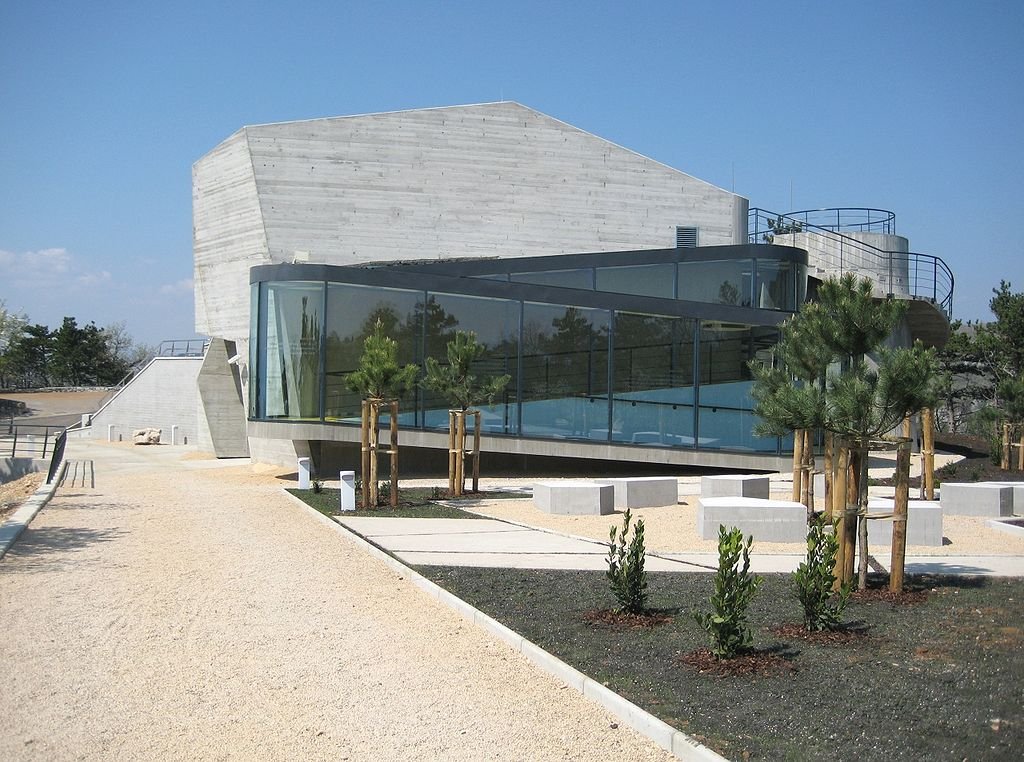
The Rijeka Astronomy Centre is a unique building in Croatia that combines a planetarium and an observatory. It is located on the Sveti Kri hill in the city’s eastern suburbs. As an attraction, it’s quite new, having debuted in 2001. The centre marked the largest-ever investment in Croatia’s technological culture and was built using a Second World War military fortification. Two variable stars have so far been found by the observatory. The greatest time for foreign visitors to visit is on Wednesday evenings throughout the summer, when the state-of-the-art planetarium screens films in several languages at 10 p.m.
Trsat Castle
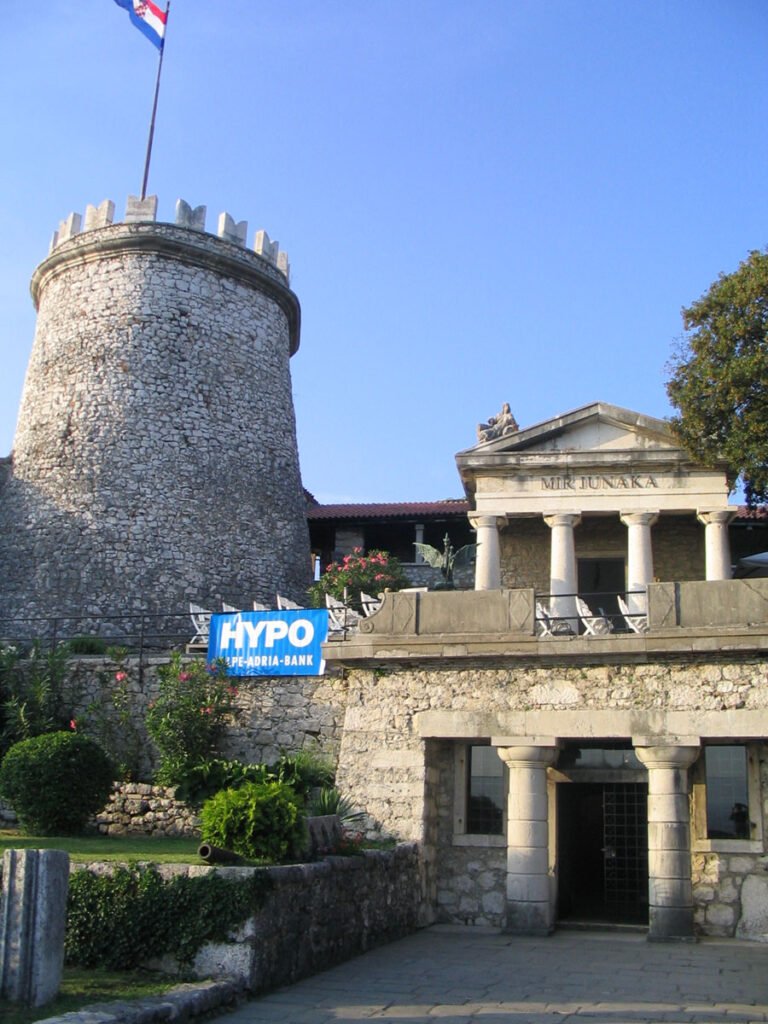
Standing atop the steep hill close to the Rjecina Gorge will suffice to show you how useful a lookout position this must have been in earlier times. Since the time of the Illyrians, who dominated most of the Balkans before the arrival of the Romans, there has been a watchtower or fortification at this hilltop elevation. The castle was passed between the Venetians and the Habsburg Empire in the 1500s, but it was neglected until Field Marshall Nugent, an Irish commander of Austrian soldiers (it was a difficult time! ), made it his home in the 19th century. The lovely improvements that Nugent added to the top in the late 1800s are what you can see there now.
Torpedo Factory
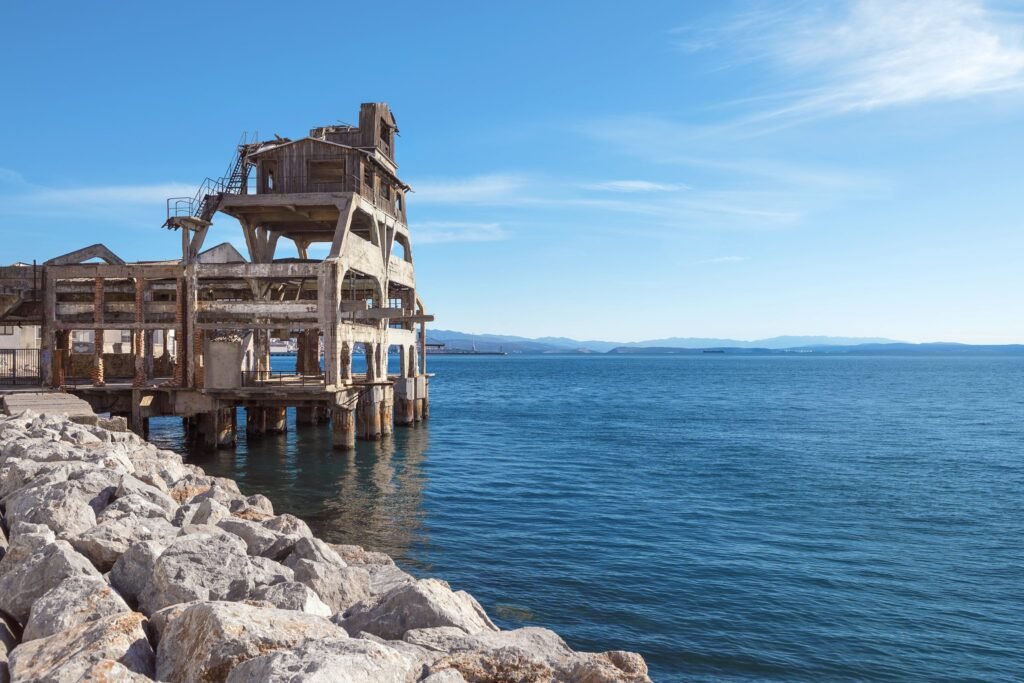
The torpedo was developed in the city of Rijeka, one of the city’s many boasts. According to the legend, former navy officer Ivan Lepps was trying to come up with strategies for defending Rijeka’s coast. He had the idea for the self-propelled “Coastal Saviour” in a flash of inspiration, and he worked with Robert Whitehead to build a prototype. The factory on Rijeka’s waterfront was producing hundreds of torpedoes per month by the turn of the 20th century, but it went bankrupt and is now only a shell of what it once was. Several ideas to repair the location and honor its history are currently being considered by the city.
Korzo
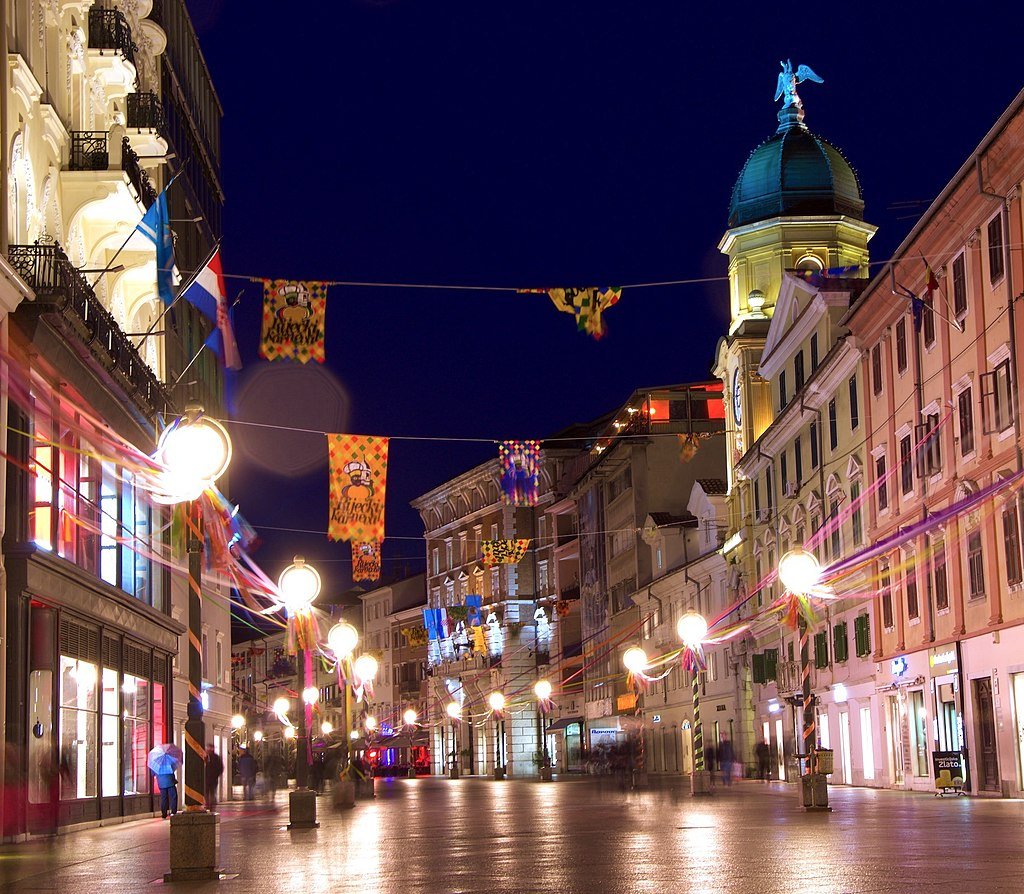
This street is particularly crucial if you want to learn about Rijeka’s daily life. Korzo is a broad, lengthy boulevard lined with upscale boutiques and eateries. Simply pull up a seat at a table, grab a cup of coffee, and watch the city go by. As the day gives way to night, Korzo has a livelier, younger vibe. Couples can be seen heading out to supper, and certain restaurants transform into nightclubs. The majority of the street’s buildings, which have an ornate neoclassical style, are from the 19th century and are well worth your attention.
Modello Palace
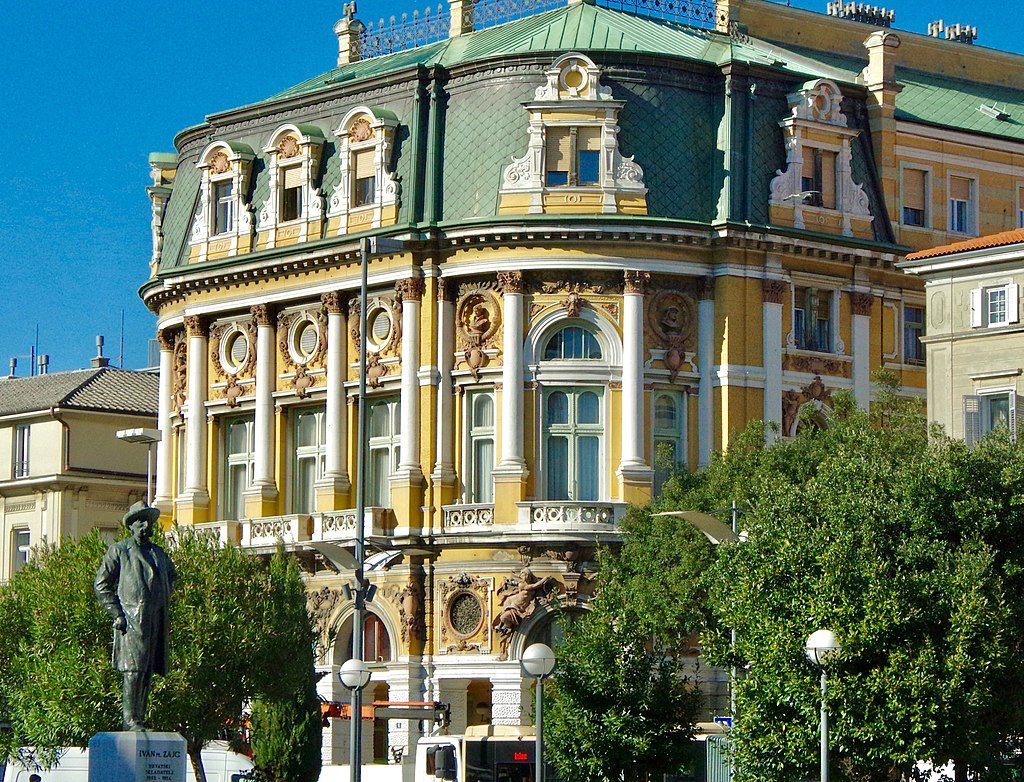
Palace Modello, another elaborate Austro-Hungarian structure in Rijeka, was created by the Fellner & Helmer firm, which was in charge of creating hundreds of structures around the empire. This structure, which was formerly a savings bank and was constructed as part of the same project that brought the city its National Theatre, stands out for its beautiful stucco exterior. The Italian Cultural Club of Rijeka meets in the gala hall within, and the city library is on the ground level.
The Maritime and History Museum of the Croatian Littoral
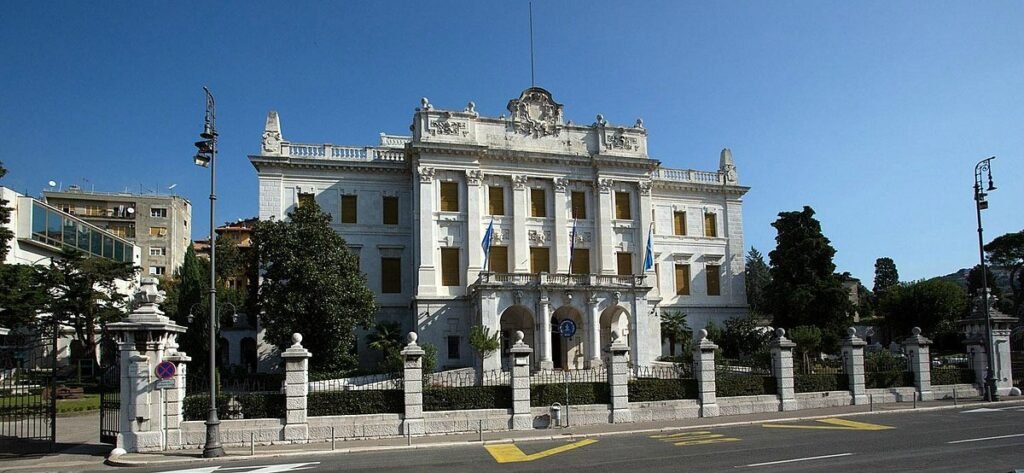
One of Rijeka’s most gorgeous structures houses this attraction. It is a gleaming white late-19th-century neoclassical palace that was constructed for the Hungarian governor, Lajos Batthyány. The museum was established in the 1960s and is divided into numerous departments, including maritime displays, archaeology, ethnography, culture, and history. It won’t be difficult to lose a couple of hours here looking at extensive exhibits of everything from old coins and maps to coats of arms, weaponry from bygone eras, tools for navigation, toys, and even postage stamps.


